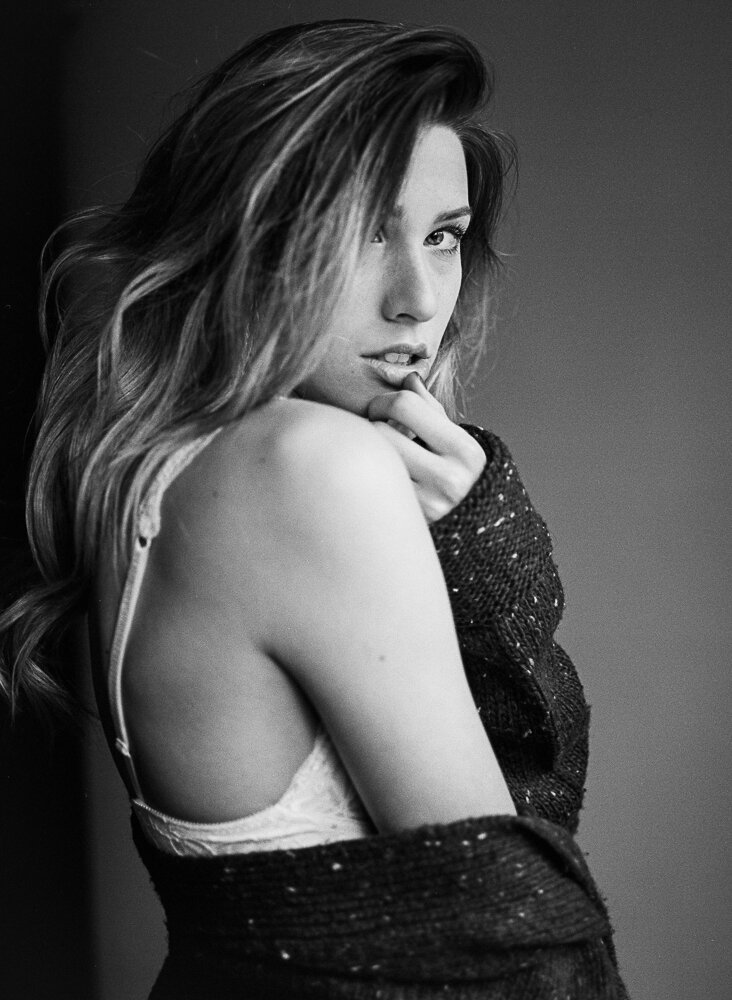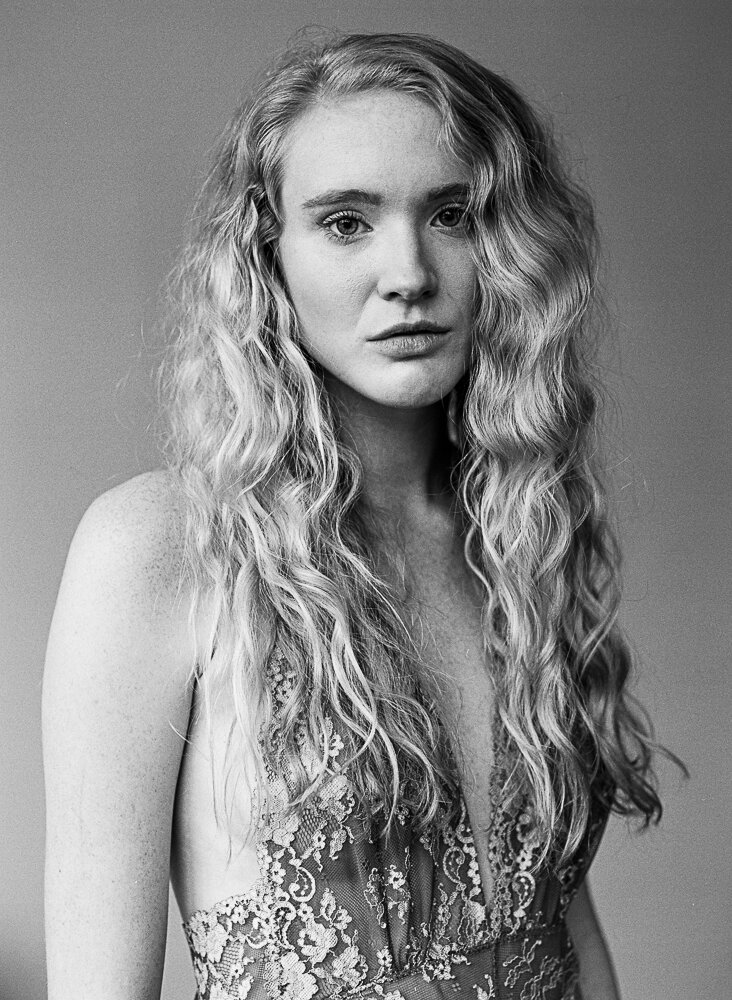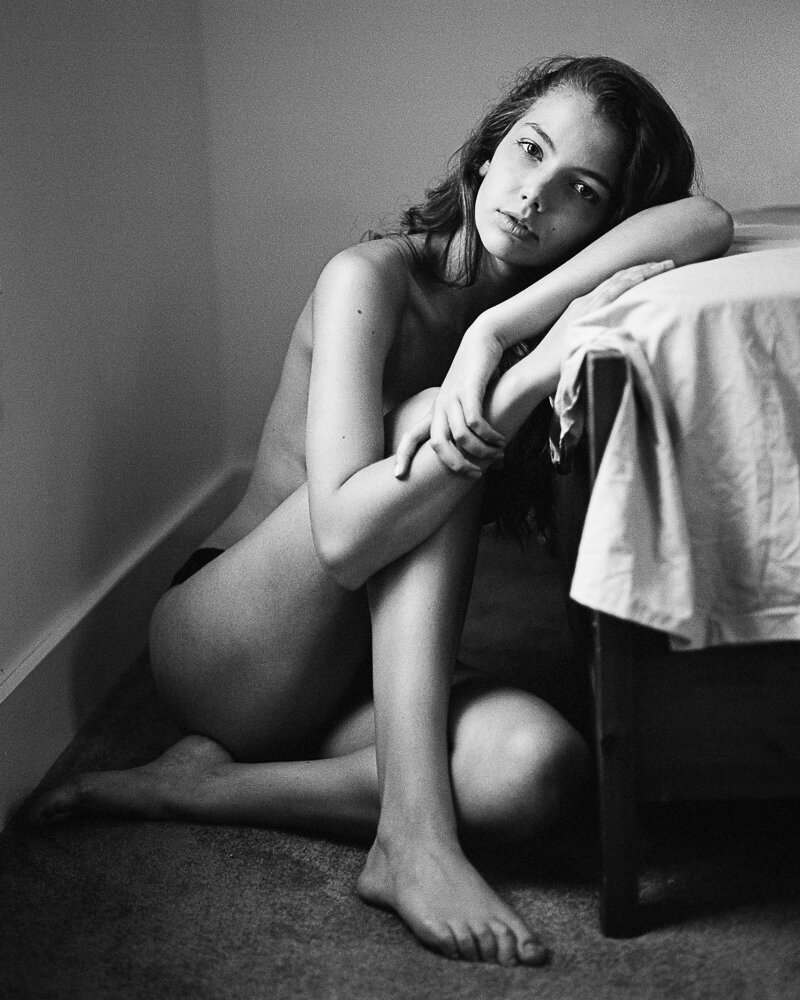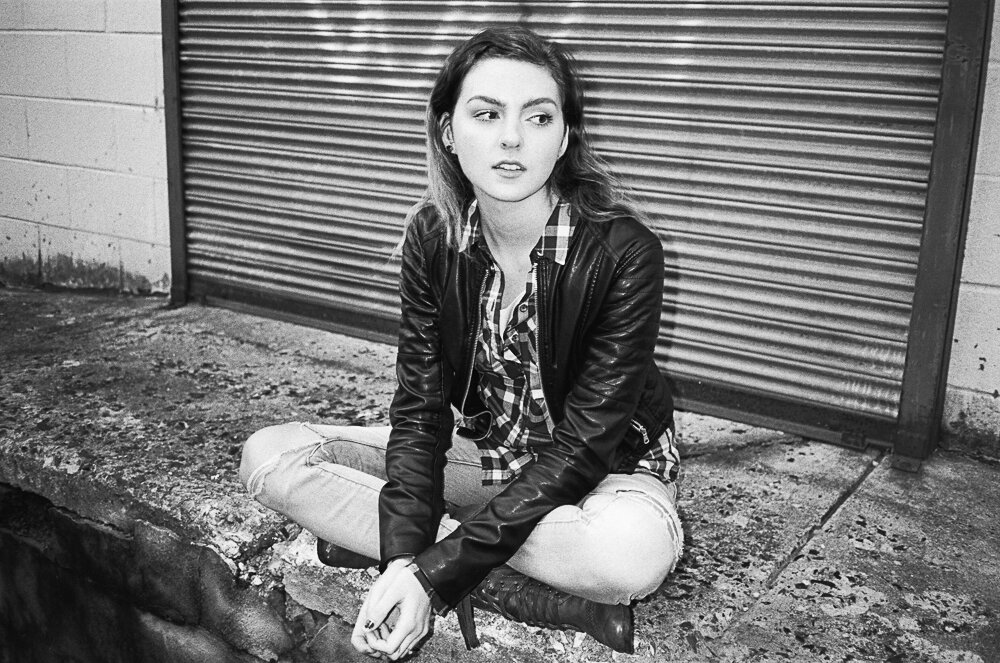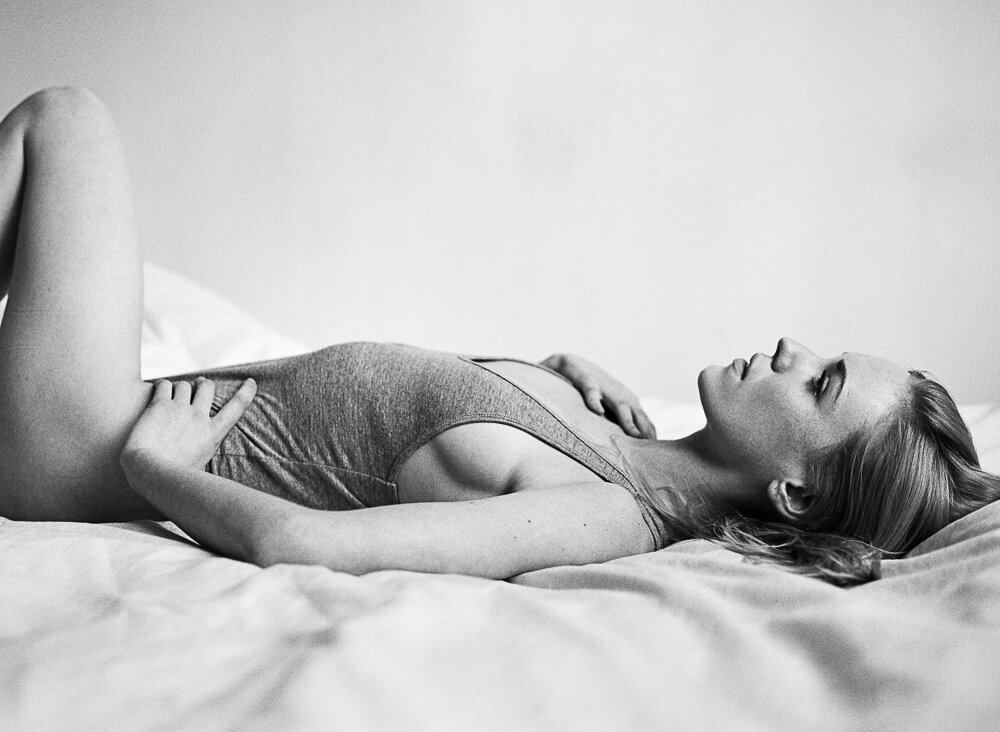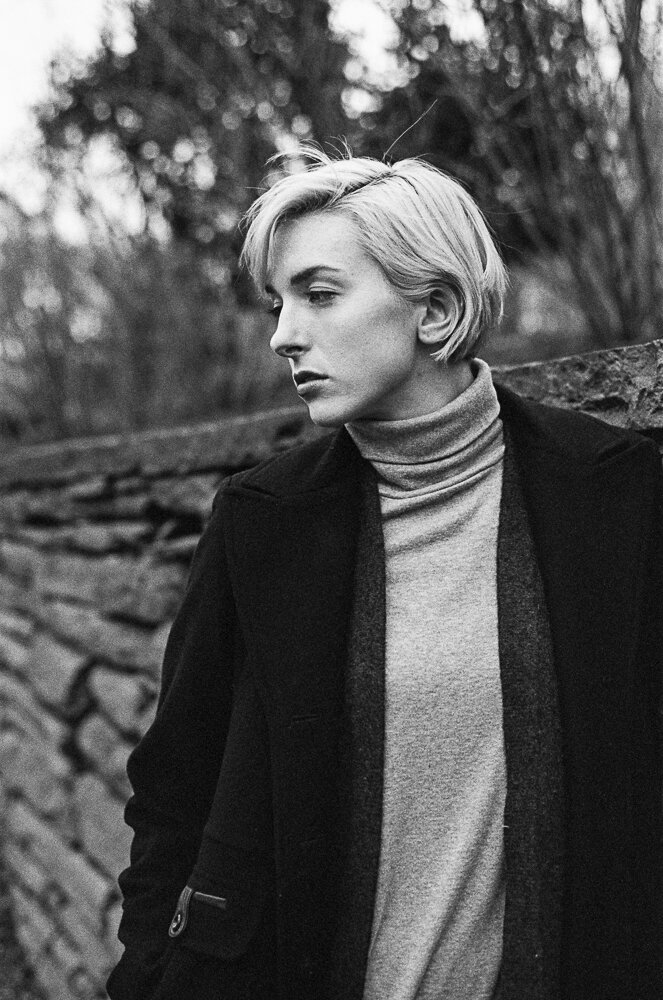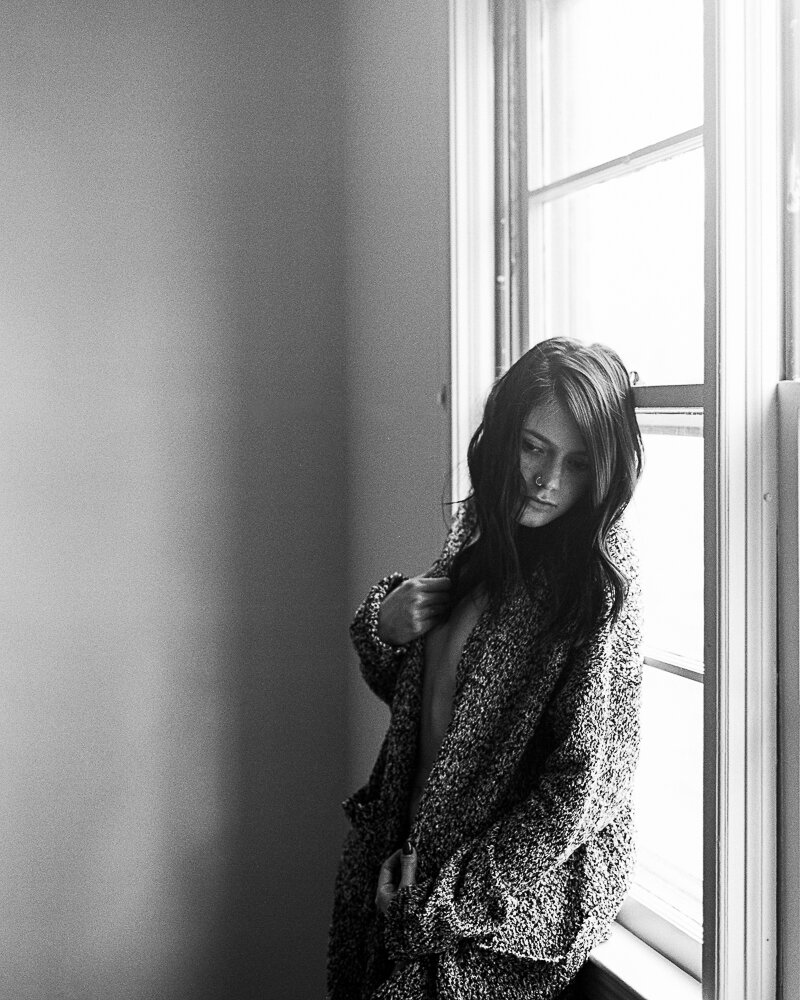Nick Nemphos: The Beauty of Portraiture in Kodak Tri-X
All images by . Used with permission. Also be sure to .
– What makes black and white photography so important to you?
I think the simplicity and depth of a well executed black and white image will always capture my interest. As someone who is primarily a portrait photographer I am always trying to push further and further into authenticity while still allowing for some areas open to interpretation and imagination. Black and white photography as a medium allows some of the distractions of color to fall away and lets the image be about the subject.
It also captures the subject in a timeless way that invokes the imagination. I love it when I take and image and if you didn’t know any better it could have been taken yesterday or 40 years ago.
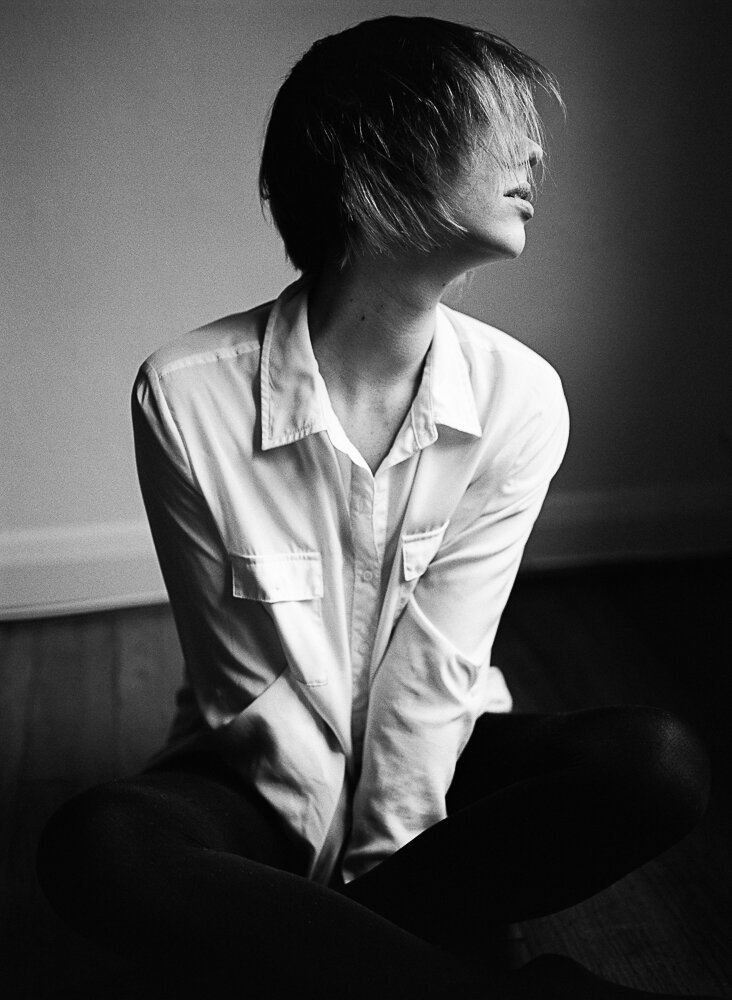
– What inspires you to create photographs
Connection. Connection and depression.
I almost exclusively photography people and what inspires me the most is when the subject and I are finding a real connection. I strive to be as open and honest while I am behind the camera and allow myself to be in a vulnerable space which in the best circumstances allows my subject to open up and be vulnerable and authentic in front of the camera. I’m not sure anything inspires me more than when everything clicks into place with myself, the subject, and the equipment to capture a real moment or emotion.
Most of my work starts from a place of stillness and sadness and while I suppose that may not seem inspiring it motivates me to create and to find that connection when so much of the time I feel closed off to the world.
– Why is black and white photography so important to our future in the art world?
As cliche as it sounds black and white photography is the essence of photography. I believe that black and white photography begins and ends with the subject whether it be a person, documenting a moment, a building or any other number of areas the photographer could choose to focus on.
For instance, when a documentary photographer really wants to drive home the meaning and emotion of the scene they’re capturing black and white filters out all the extra sensory inputs. If you were photographing a protest that occurring at sunset and you want the audience to be focused on the message of the protesters and faces of the people and not the vibrant colors of the sunset, black and white gives that freedom.
Black and white photography has always been and always will be important to the art of photography. It strangely lets people see things as they are and also ignites the imagination and allows us to dream.
– Tell us about your images and why you love Kodak Tri-X
My work is primarily portrait in nature with a slight touch of fashion elements. I like to use fashion not so much for fashion’s sake, but as an extension of who the subject is.
When it comes down to it there just isn’t a black and white film I love more than Tri-X. I love its grain structure, flexibility, and tonality. I love the way it looks shot at 400 or 1600 and it looks amazing in 35mm, 120, or large format. I may flirt with Tmax every now and again, but Tri-X is the film that has my heart when it comes to black and white.
